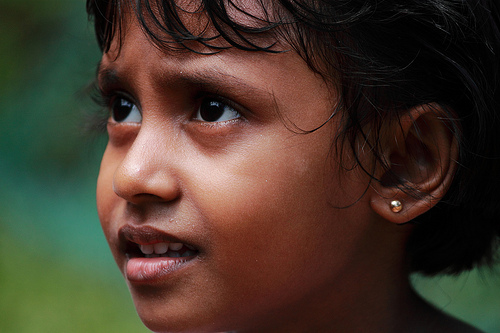 Although child labor is illegal in Sri Lanka, more than 60,000 children in the country continue to engage in hazardous forms of labor. Hundreds of these children work in sapphire and ruby mines in Ratnapura. Coming from impoverished families, these children leave school and work to supplement their family’s income.
Although child labor is illegal in Sri Lanka, more than 60,000 children in the country continue to engage in hazardous forms of labor. Hundreds of these children work in sapphire and ruby mines in Ratnapura. Coming from impoverished families, these children leave school and work to supplement their family’s income.
Although the money they earn helps to sustain their families, these children work under extremely dangerous conditions. Mining as deep as 30 to 50 feet underground they are exposed to poisonous gases, the risk of collapse from unstable shafts, malnutrition, and the constant threat of respiratory illness.
Dropping out of school as early as age ten, these children have been deprived their right to an education. In Sri Lanka, education is compulsory for children until the age of eighteen but this law remains unenforced in many locations. Without access to school supplies or adequate financial resources to support their families, children have no incentive or ability to stay in school.
“The level of education in [Ratnapura] district is not up to the standard, plus the motivation for education is lacking…These are poverty-ridden girls and boys who do not have any means of getting [school supplies from] their parents. If we have a genuine desire to give them [an] education, we must start from there” said Shyama Salgadu, senior program officer for International Labour Organization in Ratnapura.
A significant barrier to ending child labor in Sri Lanka is the lack of enforcement for multiple child labor laws which combined prohibit all forms of child labor throughout Sri Lanka.
The Employment of Women, Young Persons and Children Act of 2003 and the Amendment Act of 2006 prohibit hazardous forms of child labor. Additionally, the Mines and Minerals Law of 1973 prohibits the employment of children under 16 years of age from working in mines under hazardous conditions. Sri Lanka also signed the International Labor Organization’s Convention 132 on the Minimum Age of Employment and Convention 182 on the Worst Forms of Child Labour. In order to improve this situation, the efficacy of these laws needs to be examined.
Creative Commons Love: Bianca on Flickr.com
Written by Amanda Lubit